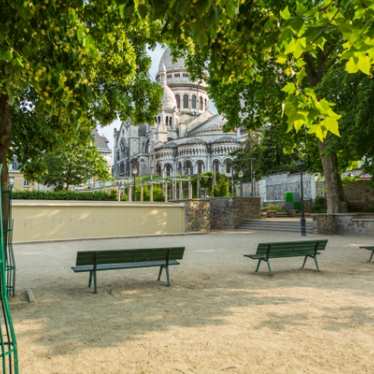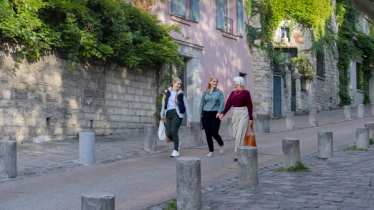
- Destinations
- Paris
- 3 days in paris itinerary
Three days in Paris
Visiting Paris for a long weekend? Here's our 3-day itinerary with top recommendations of the best places to visit in Paris over three days.


Best time to visit
Any time of the year

Famous for
fabulous architecture

Don't miss
the flea markets
Paris 3 days itinerary
There are so many iconic places to visit in Paris, it’s hard to know where to start. This three day itinerary gives you some ideas of what to see if you’re only in Paris for a few days and want to make the most of your time.
As walking around museums can be quite tiring, we’ve spread the big ones out over three days so you don’t get overwhelmed. There are tips for avoiding queues, getting the best price on attractions and addresses of bars, restaurants and cafes for pit stops along the way.
The centre of Paris is just 2hrs 16 mins away with Eurostar and with up to 15 trains a day, there's a timetable and price to suit everyone.
DAY 1: The Left Bank
This is the area south of the river where the 6th and 7th districts are located, home to the Musée d'Orsay, the Eiffel Tower, Les Invalides, Napoleon's Tomb, the Rodin Museum and some of the city's most beautiful streets.
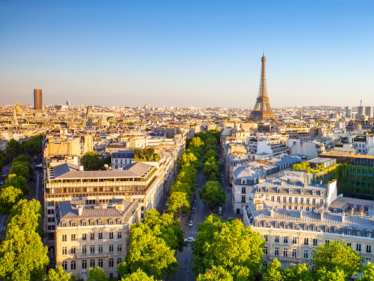
Morning at the Musée d'Orsay
It’s going to be a busy day so, if your hotel package doesn’t include breakfast, set yourself up for the day with a hearty feast and a good cup of coffee at Eggs & Co, or for a more traditional Parisian breakfast at Café de Flore. If you're on a budget, just buy some pastries from a boulangerie and eat on the move.
Today you're starting with one of the most beautiful museums in Paris, the Musée d'Orsay. This museum of 19th and 20th-century art is housed in a stunning old railway station on the banks of the Seine, just across from the Tuileries Gardens. Give yourself at least 2 hours to explore the vast selection of art, sculpture and design and to just appreciate the beauty of the space.
Try get to the Museum at 9:30 am when it opens to avoid the queues.
In France, museums are closed either on Mondays or Tuesdays so check before you plan a visit. Both the Musée d'Orsay and the Rodin Museum are closed on Mondays.
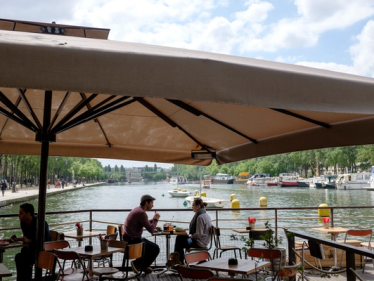
Lunch on the river
When you've had your fill of fabulous art, head west along the river past the Assemblée Nationale to Les Invalides (it's about a 10-minute walk), stopping for lunch at Rosa Bonheur, a restaurant and bar on a barge moored next to the beautifully ornate Alexandre III bridge.
If the weather is good, get yourself a seat on the terrace and enjoy views of the Grand Palais across the river and the Eiffel Tower further to the west.
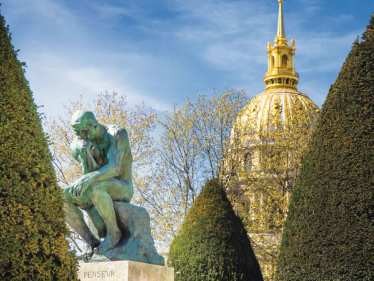
Les Invalides and the Rodin Museum
After lunch, take a stroll up the Invalides gardens towards the Army Museum and its golden dome. If you're a military enthusiast there is lots to see within the complex, including a museum dedicated to military models of towns. You can also visit the main courtyard for the tanks and artillery collection, and the tombs of famous soldiers, including Napoleon, who has pride of place under the dome.
If sculpture is more your thing, the Rodin Museum is just around the corner on Rue de Varenne, to the side of the Army Museum. Set in an 18th century mansion, the museum and its gardens are a stunning setting for Rodin's beautiful sculptures and a haven of peace and tranquility on a busy day.
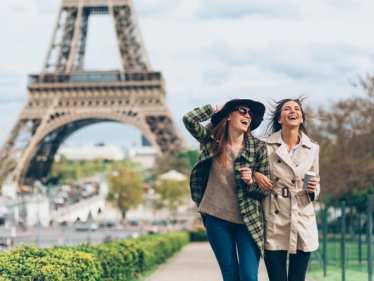
The Eiffel Tower and the Champ de Mars
Next stop, Rue Cler, just a short walk from Les Invalides and one of the best street markets in Paris (it was Julia Child's favourite street). Take a wander into La Fromagerie at number 31 for some smelly cheese tasting and pick up a perfectly ripe Brie. Then pop into Les Grandes Caves at number 55 for a bottle of delicious red. Now all you need is a crusty baguette, and you have all you need for a picnic on the Champ de Mars as the sun goes down behind the Eiffel Tower.
If you fancy the views from the top of the tower be prepared for long queues. There are several ticket options available and you can also buy fast track tickets online with specialist agencies, but they are very pricey.
If you are fit and able, you can walk up the stairs to the second floor and take the lift to the top from there. It cuts down on the queues and is considerably cheaper than getting a lift all the way from the bottom.
The cheaper tickets will just get you on the lift to the second floor, not to the top where the best views are.
DAY 2: The Louvre, Centre Pompidou and the Marais
Today is a day of contrasts, taking you from the ultra modern pyramid of the Louvre to the quaint winding streets of the Marais via historic Palais Royal and an icon of 20th century architecture.
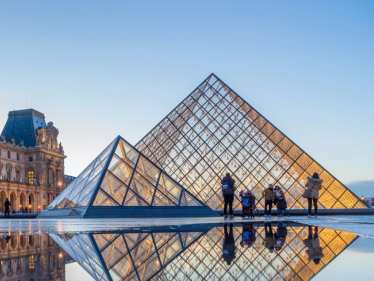
Breakfast at the Louvre
Start your morning in style with breakfast and a view of the Louvre Pyramid on the terrace of the glamourous Café Marly, or head upstairs in the Richelieu wing to the Café Richelieu and try the famous Angelina hot chocolate and pastries. Once you've had your caffeine and sugar hit you should be ready to head for the Museum.
The Louvre is the biggest museum in the world, covering 60,000 square metres (652,300 square feet), so there is no way you can see it all in one day, let alone one morning. In fact, it's been calculated that it would take 100 days to see everything in the Museum. So, plan what you want to see in advance and be realistic. You can always come back another time.
Top tip
Avoid the main entrance when it's busy and use either Galerie du Carrousel from the Commercial Centre, or Porte des Lions on the river side of the building.
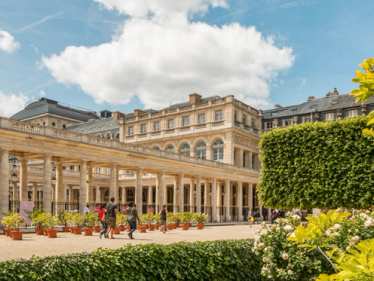
Lunch at Palais Royal
Time to sit down, have some food and rest your feet. Exit the Louvre on the Rue de Rivoli side and walk the short distance to Rue de Valois. Take one of the entrances into the Palais Royal on the left hand side of the street and walk through into the gardens.
There are several high-end restaurants in the arcades, but you'll also find more modest establishments like Cafe Kitsune and Villalys on the far side of the gardens, where you can have a very pleasant lunch on the terrace.
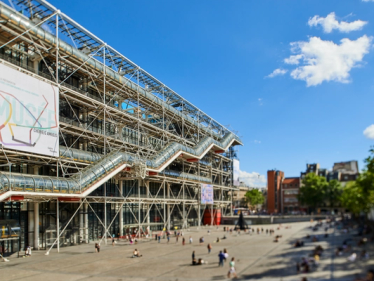
The Pompidou Centre
It's about a 20 minute walk from Palais Royal to the Pompidou Centre, or you can hop on Metro line 1 from Palais Royal - Musée du Louvre to Hotel de Ville, and walk up Rue du Renard.
The Pompidou Centre houses collections of modern art and industrial design and is considered one of the most influential buildings in 20th century architecture.
It was designed by architects Renzo Piano and Richard Rogers in the 1970s, and since then its distinctive brightly-coloured exterior has become one of the must-see sights in Paris.
For the rest of the afternoon head into the trendy Marais district, a short walk east of the Centre.
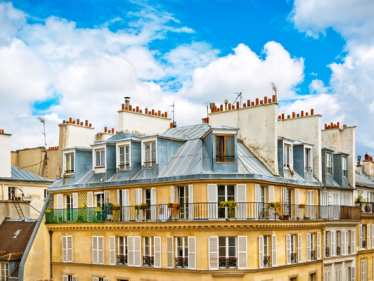
A walk around the Marais
Take Rue Rambuteau at the back of the Pompidou Centre and continue past the National Archive building along Rue des Francs Bourgeois into the heart of the Marais. This district has a very different feel to most parts of Paris, there are no wide boulevards and grand 19th century buildings, here the streets are narrow with a medieval feel.
Grand 13th century mansion houses are hidden behind high walls and unmarked gateways and many have now been turned into hotels or museums.
You'll walk past the Musée Carnavalet (reopening after renovations at the end of 2019) and arrive at the 17th century Place des Voges, the oldest square in Paris, just in time for an aperitif.
Finish your evening with dinner at the superbly ornate Brasserie Bofinger at nearby Bastille, or head back into the Marais to Rue des Rosiers for some window shopping and a kosher feast at one of the many Jewish restaurants, left over from the days when the area was the city's Jewish quarter.
DAY 3: Notre Dame and Montmartre
No trip to Paris is complete without visiting these two iconic monuments, made famous in film and literature.

Notre Dame and the islands
Day 3 starts with a visit to the very heart of Paris, Ile de la Cité, one of the two islands on the Seine and the official centre of Paris.
Notre Dame Cathedral opens at 8am so get there as early as possible to avoid the crowds. Access to the cathedral is free, but if you want to go up the tower or down to the crypt you'll need to pay (included in the Paris Pass).
Due to a recent fire, Notre-Dame cathedral will be closed until further notice.
Next stop, the Sainte-Chapelle (about a 5 minute walk away) to see the glorious stained-glass windows that illuminate this 13th century Gothic chapel.
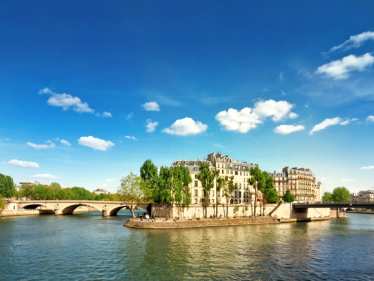
As you're walking between Notre Dame and the Sainte-Chapelle you may see a massive flower market on your right, on Place Louis Lepine. The Marché aux Fleurs Reine Elizabeth II (renamed after the Queen in 2014 to commemorate her state visit) is open all day every day, and on Sundays gets louder and even more colourful when it is joined by the bird market.
If you have time, cross over to Ile St Louis, the smaller island behind Notre Dame, and pay a visit to Berthillon, the most famous ice cream parlour in Paris. If it's not ice cream weather, they also have a tea room for hot drinks. While you're there, have a wander around the island which has some of the most expensive and exclusive real estate in Paris.
If the weather is good and you have time, you can take a 1-hour river cruise, departing from the tip of Ile de la Cité, which will take you up as far as the Eiffel tour and drop you back at Pont Neuf. It's a good way to see all the monuments along the river from a different perspective and get some great photos.
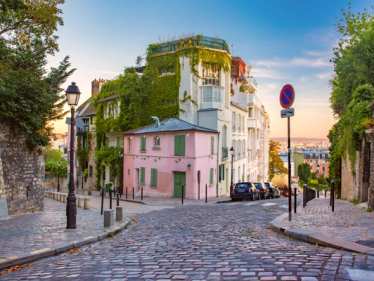
Lunch in Montmartre
Next you're heading to Montmartre for lunch. Take line 4 from Cité Metro (direction Porte de Clignancourt) and get off at Barbes Rochechouart. It's not the nearest stop but it saves you having to change. This is a back way up to Montmartre and is a bit less busy than the main access from Abbesses Metro.
When you exit the Metro, walk west along Avenue Rochechouart and turn onto Rue de Clignancourt, then take the third street on the left, Rue André del Sarte. Don't be put off if the street looks a bit seedy, the whole area is being regenerated and trendy upmarket restaurants are moving in. At the end of the street take the flight of stairs on the right which will bring you up to a very pretty square with a choice of restaurants and terraces for lunch.
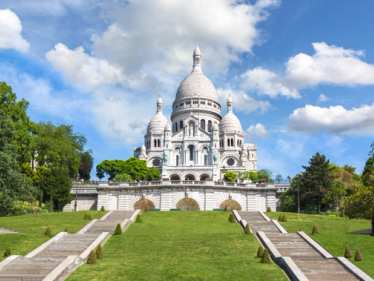
Then, take the next flight of stairs up from the square to just below the Sacré Coeur Basilica on the east side. Just one more flight of stairs to go and you're up at the top with superb views over Paris. Be aware that it gets very crowded, especially in peak periods.
The main village is to the west of the Basilica, around the Place du Tertre. It is very touristy so don't expect to find any bargains, but it's fun to browse the shops, galleries and restaurants and have your portrait or caricature done by one of the many artists on the square.
Top Tip
If you have any mobility issues the best option is to take a taxi or Montmatrobus (opens a PDF) from Pigalle as there are a lot of steps to get to the top. The funicular is only suitable if you can manage a couple of flights of steps or a steep walk, as it takes you to the level below the Basilica.
Once you get to the top, be aware that the streets are cobbled and quite uneven so walking may be difficult.
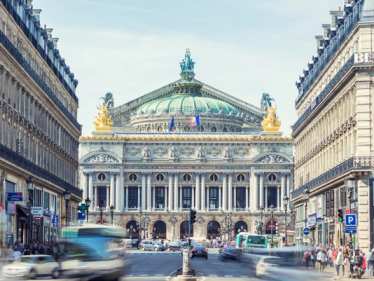
Palais Garnier and the big department stores
On your last afternoon in Paris it's probably time to hit the shops and pick up some gifts to bring home. From Montmartre, walk down to Abbesses Metro and take line 12 (direction Mairie d'Issy) and get off at Saint-Lazare station. Walk down Rue du Havre to the intersection with Boulevard Haussman. On your left you'll see Printemps, one of the biggest department stores in Paris
A bit further down the street, you will see Galeries Lafayette with its stunning internal stained-glass dome. Both stores extend over several buildings so there is plenty of choice.
Just opposite Galeries Lafayette you'll see the back of Palais Garnier, the original Opera house. Walk around the building to Place de l'Opera to see the stunning Neo-Baroque facade. Guided tours of the inside are available in English.
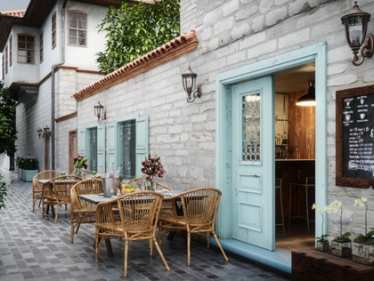
Last supper in Paris
While you're in the area of Opera, you may want to pop into the legendary Harry's New York Bar at 5 Rue Danou, for a cocktail or two and some star spotting.
When you're ready to eat there are plenty of restaurants around the area, from the elegant Cafe de La Paix, just next to Palais Garnier, to high street pizza joints. Serious carnivores should try A Coté on Rue Lafayette where you can order meat by the kilo and to share (they have English menus).
If you fancy something a bit more traditional, hop on the number 29 bus from the corner of Rue du Quatre Septembre and take it as far as Sebastopol-Etienne-Marcel. The restaurant you're heading to is Chez Poulette, possibly one of the prettiest restaurants in Paris.
Frequently asked questions
Metro
Distances between stops on the Paris Metro are much shorter than in London, so it's quite quick to get around. Unlike the London Tube map, the Metro map reflects actual distances between stops so you can judge whether it's walkable or not.
To use the Paris Metro, you need to know the number of the line you are taking and the end station which gives you the direction. So, for example, where in London you might be on the Victoria line Southbound, in Paris you would be on Line 4, direction Porte de Clignancourt.
RER
Paris also has the RER, which is a bit like Thameslink or the Overground, going a bit further out to the suburbs and the main airports. There are 5 lines, A-E, which branch out to different destinations. RER Line A, direction Marne-la-Valee Chessy, is the line that goes to Disneyland Paris and Line C, direction Versailles Chateau, will take you out to Versailles.
The RER connects with the Metro and you can use the same tickets, within equivalent zones. Visit the RATP site for service updates, maps and a travel planner.
Tips
- In Paris, on the older Metro trains, the doors don't open automatically. You need to lift the little lever (which can be quite stiff) to open the doors.
- As with every big city, be aware of your personal security and make sure that money and phones are safely zipped away in pockets or bags.
- The Paris Pass gives you free unlimited travel on the Metro, RER and bus as well as free entry to some of the main museums and attractions. There are also some fast track museum entries and discounts available on many attractions.
- If you're not planning on doing much travelling or sightseeing, buy a 'carnet' of tickets. This gives you 10 tickets that you can use at any time. If you have any left over, you can use them on your next trip to Paris.
- You can buy Metro tickets at Eurostar Café on board Eurostar. They are a bit more expensive than buying them in Paris, but handy for avoiding queues on arrival if you want to get through the station quickly.
The bus is a lovely alternative to the Metro as you see so much more as you're travelling around. Paris has a good network of routes (opens a PDF) and the buses themselves are modern and air conditioned.
Every bus has a map of the route on the wall and the name of the next stop is shown on a screen and announced, so you don't need to worry about not knowing where to get off. If you don't speak French, be aware that the names of the stops may not be pronounced the way they are written - so keep your eye on the screen.
August is the best time to take the bus in Paris as the streets of the city empty during the summer holidays, when locals head off to the country.
Metro tickets are valid for buses as well as the Metro and RER. It's best to have your ticket already before boarding the bus. Once onboard you'll need to stamp it in the machine next to the driver. On the long stretchy buses you can also get on by the middle door, where there is also a machine.
Taking the bus around Paris
Buses are a great way to see the sights without spending money. If your feet are tired and you fancy a bit of armchair sightseeing, there are a few routes that are well worth taking for the views along the way
Line 80 (opens a PDF): From Montmartre (Place de Clichy) to the Eiffel tower (Ecole Militaire), via the Champs Elysées
Line 69 (opens a PDF): From Pere Lachaise Cemetery to the Eiffel Tower, via Bastille and the Louvre
Line 82 (opens a PDF): From the Luxembourg gardens to Trocadero, via Les Invalides and the Champs de Mars
Line 39 (opens a PDF): From Boulevard Hausmann (Grands Boulevards) to Sevres Babylone via the Louvre and St Germain des Pres (great for shoppers)
The bus is a lovely alternative to the Metro as you see so much more as you're travelling around. Paris has a good network of routes (opens a PDF) and the buses themselves are modern and air conditioned.
Every bus has a map of the route on the wall and the name of the next stop is shown on a screen and announced, so you don't need to worry about not knowing where to get off. If you don't speak French, be aware that the names of the stops may not be pronounced the way they are written - so keep your eye on the screen.
August is the best time to take the bus in Paris as the streets of the city empty during the summer holidays, when locals head off to the country.
Metro tickets are valid for buses as well as the Metro and RER. It's best to have your ticket already before boarding the bus. Once onboard you'll need to stamp it in the machine next to the driver. On the long stretchy buses you can also get on by the middle door, where there is also a machine.
Top Tip
Buses are a great way to see the sights without spending money. If your feet are tired and you fancy a bit of armchair sightseeing, there are a few routes that are well worth taking for the views along the way
Line 80 (opens a PDF): From Montmartre (Place de Clichy) to the Eiffel tower (Ecole Militaire), via the Champs Elysées
Line 69 (opens a PDF): From Pere Lachaise Cemetery to the Eiffel Tower, via Bastille and the Louvre
Line 82 (opens a PDF): From the Luxembourg gardens to Trocadero, via Les Invalides and the Champs de Mars
Line 39 (opens a PDF): From Boulevard Hausmann (Grands Boulevards) to Sevres Babylone via the Louvre and St Germain des Pres (great for shoppers)
Paris has its own equivalent of the Santander hire bikes, called Velib, including the new electric bikes with a range of 50 kms. You can get 1 and 7 day passes that allow you to take up to 5 bikes a day. Just find the nearest docking station via the app, hop on and get exploring.
Some good areas to try are along the Canal St-Martin up to Bassin de la Villette and around the Bois de Vincennes.
You may also like

City breaks in Paris
Paris is all about people watching, as you drink coffee on a café terrace.
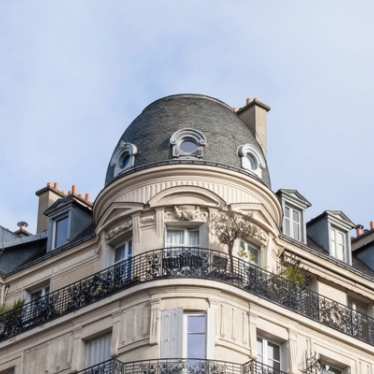
Where to stay in Paris
An easy guide by district to help you decide on the best place to stay on your city break.

Visit Paris on a budget
From famous museums with free admission to iconic cheap eats, here’s how to do Paris in style – without going into the red.






